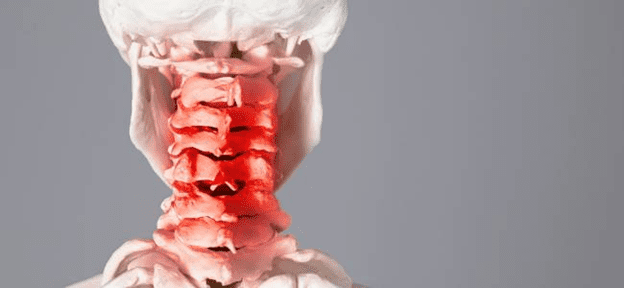Surgery on the Cervical Spine: Complete Guide to Procedures, Outcomes, and Recovery
Surgery on the cervical spine represents one of the most successful interventions in modern spine care, providing significant relief for patients suffering from neck pain, nerve compression, and related neurological symptoms. Anterior cervical discectomy and fusion (ACDF) stands as the gold standard procedure, with patient satisfaction rates consistently reaching 85-95% in long-term studies according to research published in the Journal of Spine Surgery. The cervical spine consists of seven vertebrae that support the head and protect the spinal cord, making surgical intervention both delicate and highly effective when performed by experienced spine surgeons.
At Spine Team Pain Center, our fellowship-trained surgeons, Dr. Antoine Tohmeh and Dr. Lee Sandquist, bring over 35 years of combined experience in performing complex cervical spine surgery. We understand that when conservative treatments fail to address conditions like spinal stenosis, herniated discs, or degenerative disc disease, surgical intervention becomes necessary to prevent permanent spinal cord compression and restore quality of life.
Key Takeaways
- Surgery on the cervical spine provides excellent long-term outcomes with 85-95% patient satisfaction rates and significant functional improvement for appropriately selected patients
- Anterior cervical discectomy and fusion represents the gold standard approach for addressing cervical disc pathology, spinal stenosis, and nerve compression conditions that relieve pressure on neural structures
- Comprehensive pre-operative evaluation and post-operative care, including physical therapy and pain management, optimize recovery outcomes and minimize complications
- Modern minimally invasive techniques and experienced surgical teams at facilities like Spine Team Pain Center help ensure safe, effective treatment of complex cervical spine conditions
Take the Next Step Toward Pain Relief
If you’re experiencing persistent neck pain, arm numbness, or other symptoms that may indicate cervical spine problems, don’t wait to seek expert evaluation. Our experienced team at Spine Team Pain Center combines advanced surgical techniques with comprehensive conservative care to provide the most appropriate treatment for your specific condition.
Schedule a consultation today by contacting our office to discuss your symptoms and explore all available treatment options. Our fellowship-trained spine surgeons and interventional pain specialists are ready to help you find the relief you deserve and return to an active, pain-free lifestyle.
Understanding Cervical Spine Surgery
Cervical surgery encompasses various procedures designed to address pathology affecting the neck region of the spine. The most common approach involves anterior surgery, where surgeons access the spine from the front of the neck, providing direct visualization of cervical disc problems and nerve root compression. This technique, as detailed by Hospital for Special Surgery, allows for the complete removal of damaged disc material while maintaining the integrity of surrounding structures.
The anterior cervical approach offers several advantages over posterior techniques. Surgeons can directly address the source of nerve root compression without manipulating the spinal cord or disrupting the posterior neck muscles. This results in less post-operative pain and faster recovery times for many patients seeking relief from severe neck pain.
Minimally invasive techniques have revolutionized cervical spine surgery, allowing for smaller incisions and reduced tissue trauma. These advanced approaches maintain the effectiveness of traditional open surgery while minimizing complications such as excessive bleeding and soft tissue damage. Our team at Spine Team Pain Center utilizes the latest minimally invasive spine surgery techniques to optimize patient outcomes.
Common Conditions Requiring Surgery
Several conditions may necessitate surgical intervention when conservative treatments fail. Spinal stenosis occurs when the spinal canal narrows, compressing neural structures and causing pain, numbness, or weakness. Bone spurs often develop as part of the degenerative process, further reducing available space for the cervical spinal cord and nerve roots.
Herniated discs represent another common indication for surgery, particularly when they cause significant nerve root compression or contribute to cervical spondylotic myelopathy. The posterior longitudinal ligament may also become thickened or ossified, requiring surgical removal to achieve adequate decompression.
Patients experiencing severe neck pain that radiates into the arms often benefit from cervical discectomy and fusion procedures. These comprehensive interventions address both the source of compression and provide long-term stability through fusion of affected vertebrae with bone graft material.
Our specialists at Spine Team Pain Center thoroughly evaluate each patient to determine the most appropriate surgical approach. Before considering surgery, we typically explore conservative options, including epidural steroid injections and comprehensive interventional pain management strategies.
Surgical Procedures and Techniques
Cervical laminectomy represents one surgical option for addressing posterior compression of neural elements. This procedure involves removing portions of the lamina to create more space for the spinal cord and nerve roots. However, anterior approaches often provide more direct access to pathology originating from disc degeneration.
The cervical discectomy and fusion procedure typically begins with a small transverse incision made in a natural skin crease. Surgeons carefully dissect through tissue planes to access the affected disc space while protecting vital structures, including the esophagus, trachea, and major blood vessels. Complete disc removal follows, including nucleus pulposus and annular material that may be compressing neural structures.
Bone graft placement represents a critical component of fusion procedures. The graft material, which may be autograft, allograft, or synthetic, promotes healing between adjacent vertebrae to create a solid fusion mass. Modern techniques often incorporate titanium or PEEK cages filled with bone graft material to maintain disc height and cervical alignment.
Spinal surgery hardware, including anterior cervical plates and screws, provides immediate stability while biological fusion occurs. Proper hardware placement requires precise surgical technique and a thorough understanding of cervical anatomy to avoid complications while optimizing fusion rates.
Recovery and Rehabilitation
Recovery from cervical spine surgery follows predictable phases, with most patients experiencing significant improvement in their pre-operative symptoms within days of surgery. The initial healing period typically requires 2-4 weeks, during which patients may need to wear a neck brace to provide additional support and limit excessive neck movement.
Physical therapy plays a crucial role in optimizing recovery outcomes. Our comprehensive physical therapy programs focus on restoring neck mobility, strengthening surrounding musculature, and teaching proper body mechanics to prevent future injury. Most patients begin a gentle range of motion exercises within the first few weeks after surgery.
The timeline for returning to normal activities varies based on individual healing rates and occupational demands. Office workers may return to light duties within 1-2 weeks, while those engaged in manual labor typically require 6-12 weeks before resuming full activities. Complete bone fusion usually occurs within 3-6 months, though the process may take up to one year in some cases.
For more detailed information about recovery expectations, patients can review our guide on spine surgery recovery to better understand the healing process and important milestones.
Expected Outcomes and Success Rates
Long-term studies demonstrate excellent outcomes following cervical spine surgery, with patient satisfaction rates consistently ranging from 85-95% according to comprehensive research published in peer-reviewed journals. These high success rates reflect the procedure’s effectiveness in addressing the underlying pathology causing symptoms while providing durable relief over extended follow-up periods.
Functional improvement represents another key outcome measure, with most patients experiencing significant reductions in disability scores and marked improvement in their ability to perform daily activities. Research examining multilevel procedures shows that even complex four-level surgeries can provide meaningful clinical improvement when appropriately performed.
Pain relief typically occurs in two phases: immediate relief from nerve compression often becomes apparent within days of surgery, while surgical site discomfort gradually resolves over several weeks. Most patients report substantial improvements in both neck pain and radiating arm pain that persist throughout long-term follow-up periods.
Potential Complications and Risk Management
While cervical spine surgery maintains an excellent safety profile, patients should understand potential complications to make informed decisions about their care. Overall complication rates range from 13.2% to 19.3% according to comprehensive analyses published in Surgical Neurology International, with most complications being minor and readily manageable.
Dysphagia, or difficulty swallowing, represents the most common complication, occurring in 1.7% to 9.5% of patients. This typically results from soft tissue swelling and usually resolves within weeks to months of surgery. Studies using radiographic evaluation show that 91% of dysphagia cases demonstrate soft tissue swelling with pharyngeal or esophageal displacement.
Infection rates remain low at 0.1% to 1.6%, reflecting the excellent blood supply in the cervical region and routine use of prophylactic antibiotics. Other potential complications include recurrent laryngeal nerve injury (0.9% to 3.1%), cerebrospinal fluid leaks, and hardware-related issues, though these occur infrequently with proper surgical technique.
Adjacent segment disease represents a long-term consideration, with studies showing development rates of approximately 21% over 10-year follow-up periods. This condition results from increased stress on spine segments adjacent to the fusion and may require additional treatment in some cases.
Frequently Asked Questions
What makes someone a good candidate for cervical spine surgery?
Ideal candidates for spine surgery have failed conservative treatments and demonstrate a clear correlation between imaging findings and clinical symptoms. Patients experiencing severe pain, progressive neurological deficits, or functional limitations that significantly impact quality of life often benefit most from surgical intervention. Spine surgeons carefully evaluate each case to ensure appropriate patient selection and optimize outcomes.
How does cervical surgery differ from lumbar spine procedures?
Surgical management of the cervical spine requires different approaches compared to lower back procedures due to anatomical differences and proximity to vital structures. The cervical region’s smaller size and presence of the spinal cord necessitate more delicate techniques, though recovery times are often shorter than lumbar procedures. Both regions may benefit from similar pain management strategies during recovery.
What can patients expect regarding post-surgical pain?
Post-surgical pain typically follows predictable patterns, with initial surgical discomfort gradually improving over 2-4 weeks. Many patients experience immediate relief from pre-operative arm pain and neurological symptoms as nerve root compression is eliminated. Comprehensive pain management protocols help optimize comfort during the healing process while minimizing reliance on narcotic medications.
How do fusion procedures affect neck movement?
Fusion surgery eliminates motion at treated levels while preserving movement at adjacent segments. Most patients maintain functional neck movement for daily activities, though some restriction in extreme ranges of motion is expected. The vertebral body fusion creates stability that often improves overall function despite some loss of segmental motion.
What role do neck muscles play in recovery?
Strong neck muscles provide important support during recovery and long-term spine health. Physical therapy programs focus on gradually strengthening these muscles while respecting healing tissues. Proper muscle conditioning helps support spinal stability and may reduce the risk of adjacent segment problems over time.
How does cervical fusion promote bone growth?
Cervical fusion utilizes the body’s natural bone growth processes to create solid connections between vertebrae. ACDF surgery incorporates bone graft materials that provide scaffolding for new bone formation. Complete fusion typically requires 3-6 months, though the process continues to strengthen over the first year. Optimal spine health depends on successful biological healing and incorporation of graft materials to alleviate pain and maintain structural integrity.

